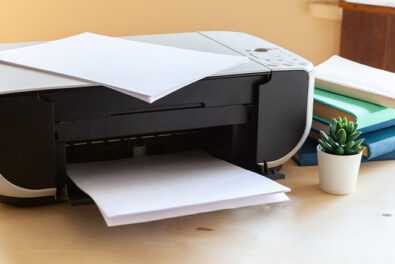Strategies for Physical Document Mastery
In a world seemingly dominated by digital solutions, it might surprise you to learn that paper usage is on the rise. Despite the rapid pace of digitalization, physical documents continue to play a significant role in many aspects of business operations.
So, how can you manage your physical documents effectively, especially when you have a large volume of them? What are the best practices to follow? And what are the benefits of doing so? In this blog post, we’ll share the top three tips from David Johnston, an expert in records management based in Dubai UAE, on what to consider when managing physical documents.
WRITTEN BY DAVID JOHNSTON

David is the Client Services Manager at Crown Records Management UAE. He has over 20 years of experience in the field of both digital and traditional records management.
1. Conduct a Document Audit Review
The first thing to do when managing physical documents is to understand what documents you need to keep and for how long. This is important because different documents have different legal and regulatory requirements, and you don’t want to keep unnecessary documents that take up space, cost money, and pose a security risk.
To achieve this, conduct a thorough document audit review. Categorize your documents based on their importance, legal requirements, and retention periods. Identify which documents must be retained for compliance reasons and which can be securely discarded to declutter your workspace.
By conducting a document audit review, you can create a document retention policy, specifying the rules and guidelines for keeping, disposing, and destroying your documents. This will help you comply with legal and regulatory obligations, as well as optimize your storage space and costs.
2. Choose the Right Storage Option
Once you’ve determined which documents are essential for your business, the next consideration is where to store them. While maintaining an on-site storage system might seem convenient, it often poses risks such as damage from environmental factors, theft, or loss due to unforeseen events.
Consider opting for a safe and secure off-site storage facility. These facilities are designed to protect your physical documents from potential hazards. They provide controlled environments, advanced security measures, fire prevention systems & restricted access protocols and disaster recovery plans to ensure the safety and confidentiality of your documents.
By outsourcing your document storage to a specialized facility, you not only mitigate risks but also free up valuable office space for more productive purposes. This strategic decision contributes to a more efficient and secure document management system.
3. Implement a Filing and Indexing System
Having quick and easy access to your physical documents is crucial for maintaining operational efficiency. The key to achieving this is through methodical filing and accurate indexing allowing you to locate what you need without wasting time, money, or resources.
One way to do this is to file your documents methodically, using a consistent and logical system that suits your business needs and preferences. Use labels, folders, boxes, shelves, or cabinets to organize your documents by categories, such as type, date, owner, or subject. You can also use colour codes, symbols, or numbers to make your documents easier to identify and locate.
Another way to do this is to index your documents accurately, using a reliable and searchable database that records and tracks all the information and metadata about your documents. Use software, spreadsheets, or databases to create and maintain your document index, where you can enter and update details such as title, description, location, status, or history of your documents. You can also use keywords, tags, or filters to make your documents easier to search and find.
By filing and indexing your documents properly, you can improve your document access and retrieval, as well as enhance your document security and accountability.
As you can see, managing physical documents is not only possible, but also beneficial for your business and the environment. By conducting regular document audits, choosing secure off-site storage, and implementing methodical filing and indexing, you set the foundation for a streamlined and efficient document management system.
Remember, file right, file smart, and in doing so, save both time and money in your business operations.
NEED SOME ASSISTANCE?

If you’re looking for expert support in managing your physical documents, Contact David Johnston or the Crown Records Management Team today for a free consultation.
Let us assist you in navigating the complexities of document management in today’s digital age.








